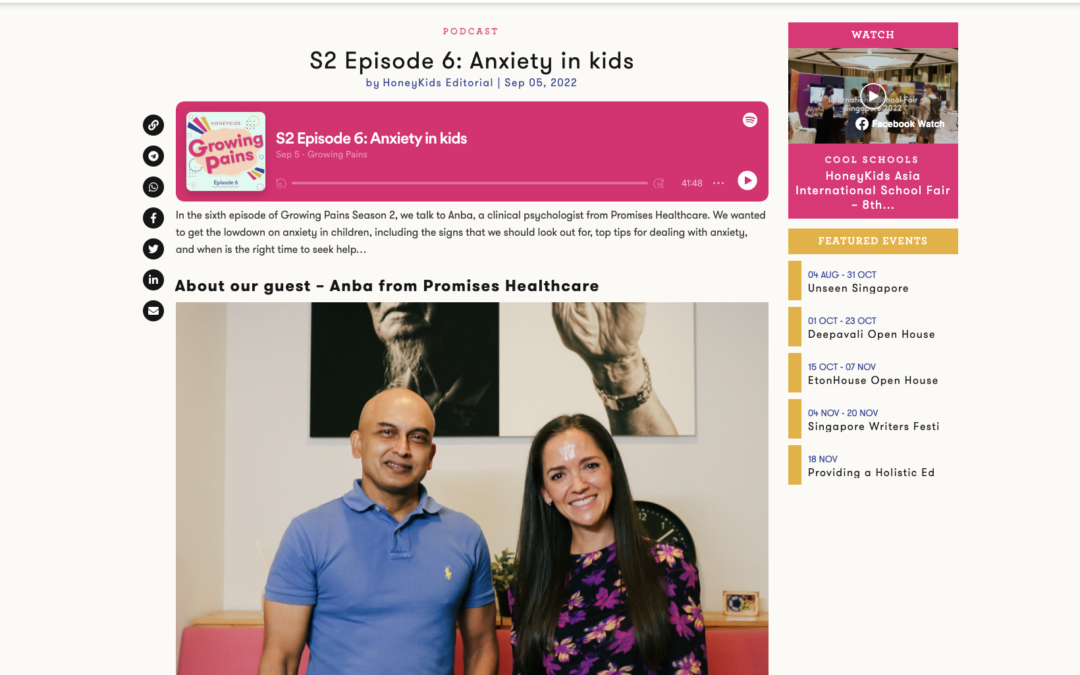
A nomadic expat life can be stressful on kids!
Expat life and moving around the world places a great deal of stress on children. DR REBECCA GIESS and DR MARK TOH from Promises Healthcare share how parents can help them adapt to new environments and people.
What issues do children deal with when adjusting to expat life?
Rebecca: They suffer mostly from homesickness, and grief from losing friends, extended family and familiar places. In a new country, they find it difficult to fit in and feel a sense of belonging. They have a fear of missing out (FOMO) on life back home.
Mark: They perceive a threat in relocating. Extended family and friends represent the emotional resources the child depended on, and the disruption in daily routine affects their emotional security and stability. This is an important and largely overlooked stressor. How children experience this, and how prepared they are for the change, is based on their relationship with their parents.

What are the red flags?
Rebecca: It can be difficult for children to know how they are feeling or how to express it. They may exhibit anti-social behaviours by breaking the rules or defying expectations. Tune into your child to uncover the underlying emotional triggers, and what they might need emotionally from you.
Mark: For children under the age of eight, there may be more crying, moodiness and irritability, complaining about school, expressing worry, or becoming withdrawn and clingy. There may also be regressions such as thumb-sucking, temper tantrums or toilet accidents, despite being potty-trained.
Children aged seven to 10 may worry about their health or family and express anger and irritability. They may also pin negative labels on themselves. Some of these behaviours may manifest at school more than at home.
Preteens may be more reactive to the demands and stress of the new school, complaining about the different system or classmates. They could become withdrawn, have more incompleted homework, or have declining grades.

How can we help teenagers adjust?
Mark: Teenagers will miss their friends, prom, graduation and sports pursuits – the rites of passage – and they may feel their sense of identity being stripped away. They may display depression, anxiety, irritability, apathy and withdrawal, which increases their sense of isolation.
Those who feel ready to be independent may feel trapped with their family. They blame their feelings on the relocation and start to resent the family for it.
If the teenager is close to completing Grade 12, consider allowing them to graduate before they relocate.
How can parents navigate their child’s emotions?
Rebecca: Create space and guidance for their emotional experiences. Parents can validate and normalise their emotions by saying things like: “It makes sense.” Or: “It’s normal to feel sad or stressed.”
Don’t place any expectations on how your child “should be feeling”. They feel what they feel. Parents can help them label their emotions and work out how best to manage them.
Talk to your child about becoming a “third culture kid” – someone who spends a portion of their developmental years in another country. There are several benefits and challenges worth understanding and planning for.
I recommend parents read Third Culture Kids: The Experience Of Growing Up Among Worlds (Pollock, Van Reken & Pollock 2017).
What is most important to the child?
Mark: Children are looking for safety and security. With younger children especially, this depends on how close they are to their parents. Pay more attention to any work or social activity that might threaten this bond. Parents must remain accessible to the child, meeting regularly, exploring and discovering the country together and having fun in the process.
They should also assess how they themselves are coping, and if they might be unintentionally neglecting their child’s needs.

What can parents do at home?
Mark: Help children to set up their room. They are more likely to embrace their new home when they know that their needs are being met predictably. Parents should be ready to share their personal feelings and discoveries to encourage their children to communicate as well.
Create routines that bring everyone together. Playing games encourages bonding. Team games, where discoveries can be made individually and shared collectively, are particularly useful. In the process, the family learns about each member together.
How can a therapist help?
Rebecca: Therapists are trained to work with children experiencing anxiety and depressive symptoms due to adjustment difficulties. Children are rarely completely open with their parents and may do better in a non-judgmental safe space.
Mark: A therapist looks at both the child and family’s wellbeing. How is each person in the family coping? If there are individual or collective difficulties uncovered, the therapist could help them get unstuck.

About Dr Giess & Dr Toh
Dr Giess has extensive experience in working with teenagers and parents. She also helps adults address severe and chronic mental and physical health issues, and is trained in couples relationship counselling.
Dr Toh treats troubled children and their families and helps them to address their challenges. Helping parents to parent well is also a concern for him. He also works with couples and individual adults, as well as individuals with personality disorders.
Promises Healthcare is at #09-22/23 Novena Medical Center, 10 Sinaran Drive. Contact the team at 6397 7309.





